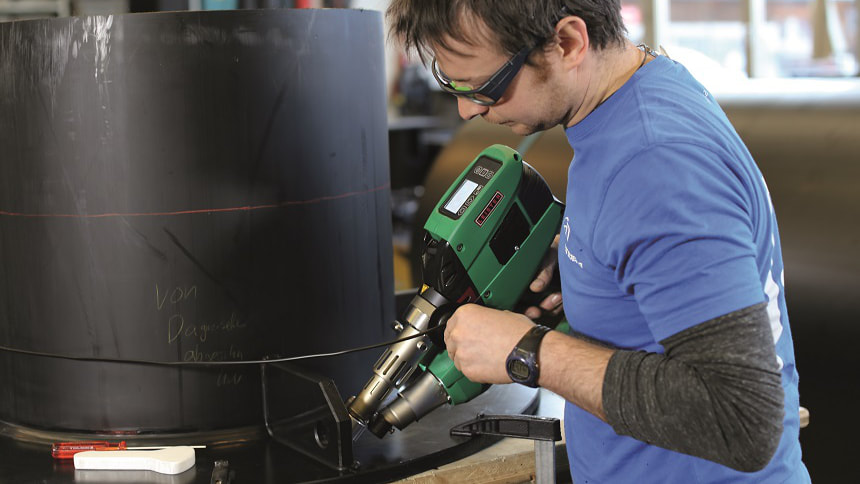|
Broadly, there are two types of hot air plastic welding tools: manual tools and extrusion welders. Manual tools are ideal for very small fabrication work, detailed projects, and repair work. Extrusion welders are suited for larger fabrication projects such as tanks, chutes, liners, and piping.
Manual Tools
If you’re building a small one-off prototype, doing detail work, or making small repairs, a manual tool is the way to go. Hand tools are best suited for welding thinner plastics in the range of 3-5mm, and shouldn’t be used for thicknesses beyond 10mm. Thicker plastics will require several passes in order to fully weld the materials; with each pass there is additional chance for imperfection which leads to increasing chances of the weld failing. We recommend using an extrusion welder for thick plastics.
Our most popular tool by far is the TRIAC ST. The TRIAC ST is easy to manoeuvre, well-balanced, and extremely flexible. With a myriad of nozzles available, the TRIAC ST can easily jump between projects and adapt to changing projects and requirements. The HOT JET S is lighter and smaller than the TRIAC, measuring only 24cm in length. Its small size makes it ideal for small and detailed work, welding in hard to reach areas, welding for long periods of time, and for small hands. In addition to variable temperature, the HOT JET S includes independent air flow control. Not discussed: welding hand tools fed by an external air supply. If you’re interested in welding with an external air source contact your technical sales representative to discuss your options. Extrusion Welders
For larger fabrication work and thicker plastics an extrusion welder is the key to producing strong welds. Leister produces two series of extrusion welders: WELDPLAST and FUSION. The WELDPLAST family of tools are digitally controlled; temperature is maintained at a set point with a closed loop, pre-heating air and extrudate temperatures can be independently adjusted through the digital display, and welding parameters can be saved in memory as recipes which can be re-loaded when needed. The FUSION family of tools are controlled via potentiometer and do not include a display; extrudate is heated by the pre-heating air, and temperatures cannot be independently adjusted. Read more about the differences between these two series of extrusion welders.
The best model of extrusion welder depends on several variables. A small extruder such as the WELDPLAST S1 or FUSION 2 is ideal for welding in small spaces or on small jobs. The WELDPLAST S2 PVC and WELDPLAST S1 are specifically designed to deal with the challenge of welding PVC. Thicker plastics require a larger tool such as the FUSION 3C (capable of welding up 25mm thick plastic), or the WELDPLAST S4 (capable of welding up to 35mm thick plastic). We suggest you speak with your technical sales representative for help deciding on the right extrusion welder.
Originally published: 9/20/2014
Comments are closed.
|
|
STANMECH Technologies Inc.
944 Zelco Drive Burlington ON L7L 4Y3 | 1-888-438-6324 | [email protected] Terms of Use Privacy Terms and Conditions of Sale Warranty Policies |
|
Proud Member of:


